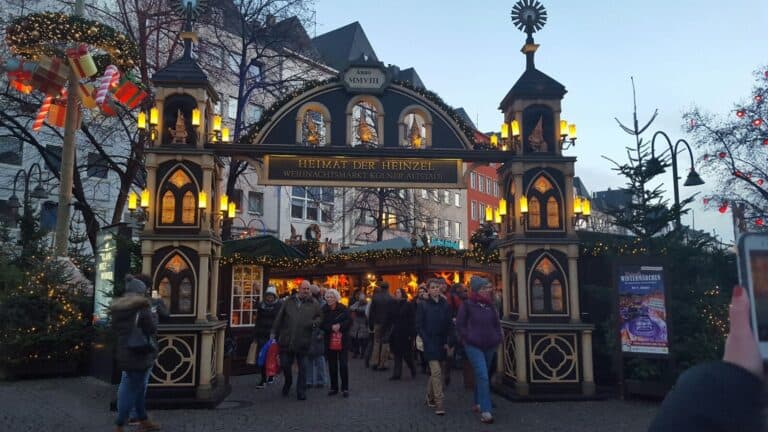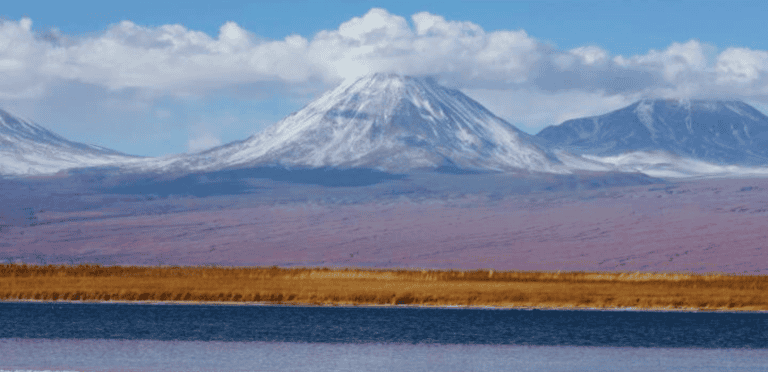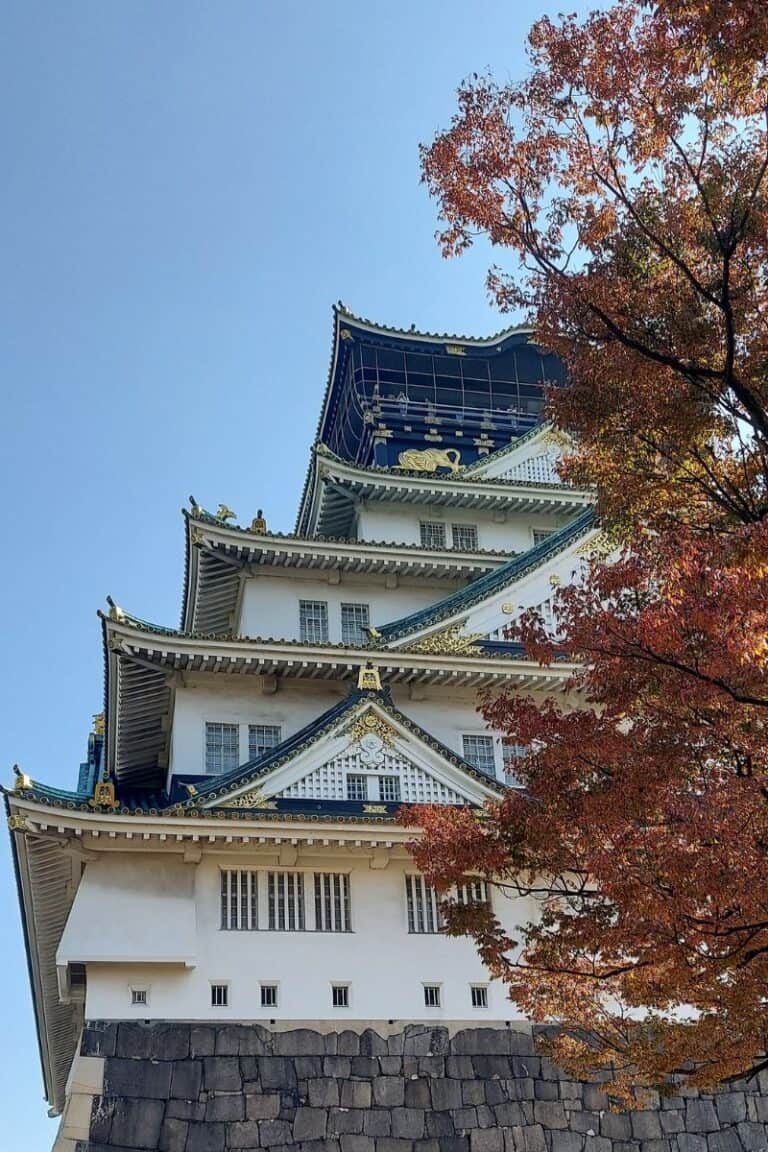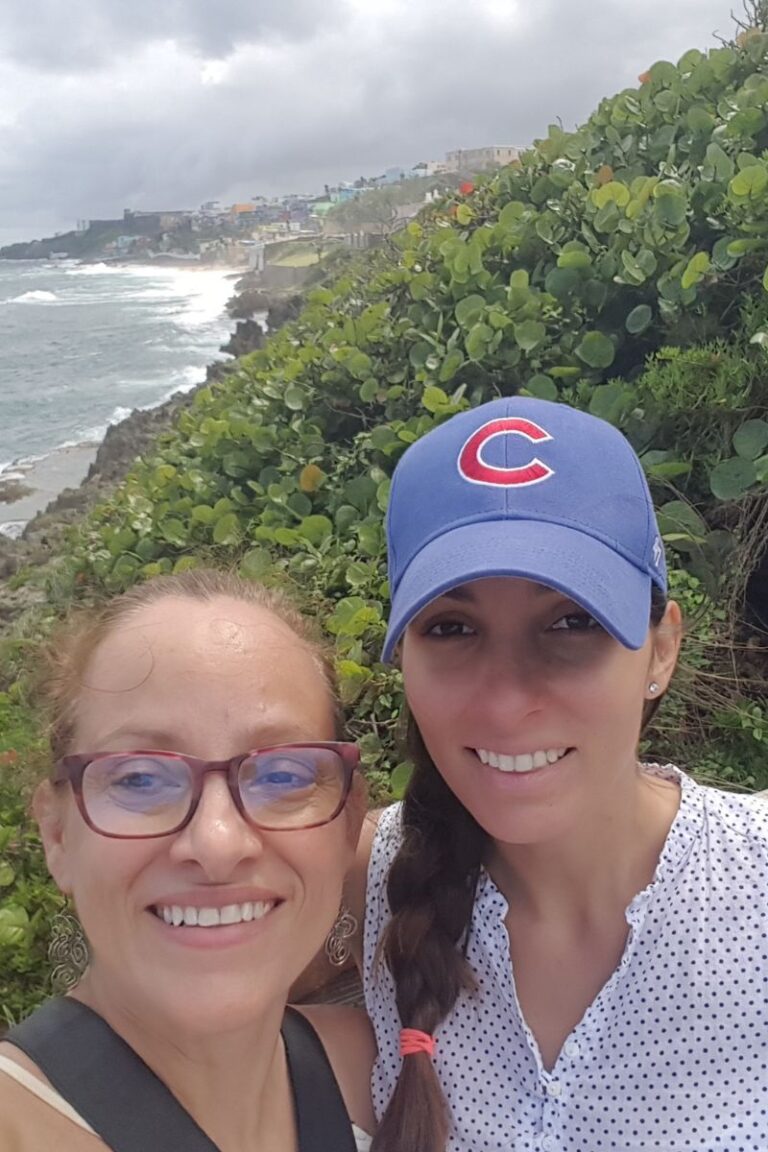Kenrokuen Garden Japan: Discover One Of Japan’s Three Great Gardens
Kenrokuen Garden Japan, is exactly how you imagine the perfect Japanese garden — peaceful, beautiful, and full of timeless charm.
Located in Kanazawa, this 25-acre masterpiece is considered one of the Three Great Gardens of Japan, along with Kairakuen in Mito and Korakuen in Okayama.
Stroll through winding paths, admire tranquil ponds, and experience the art of traditional landscape design at its finest.
If you love gardens or simply enjoy spending time outdoors, visiting Kenrokuen Garden is a must during your trip to Japan.
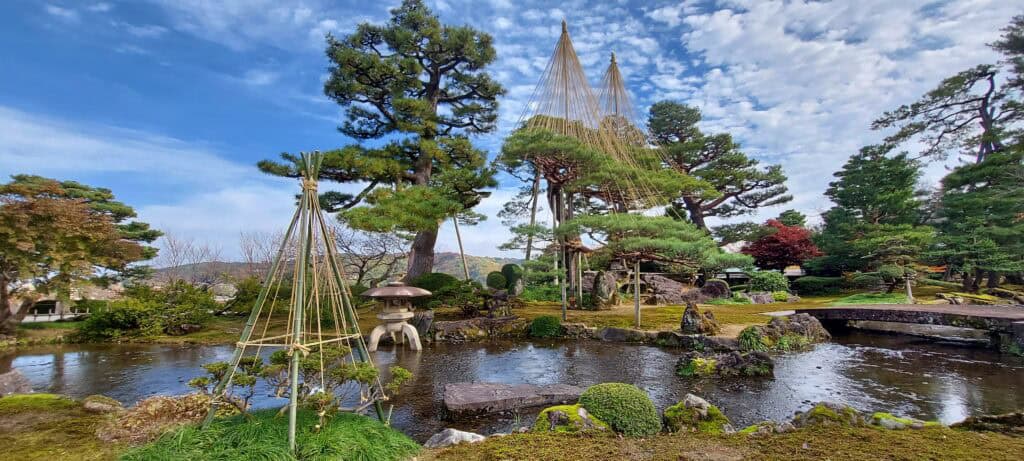
Why Kenrokuen Garden is so Special
The Maeda family created Kenrokuen Garden over several hundred years, beginning during Japan’s Edo period.
Inspired by the ideals of prosperity and “eternal life,” they designed a garden meant to capture both beauty and meaning.
The name Kenrokuen means “garden that combines six characteristics”: spaciousness, seclusion, artifice, antiquity, abundant water, and magnificent views.
Not many gardens in Japan manage to bring all six together, but Kenrokuen pulls it off beautifully.
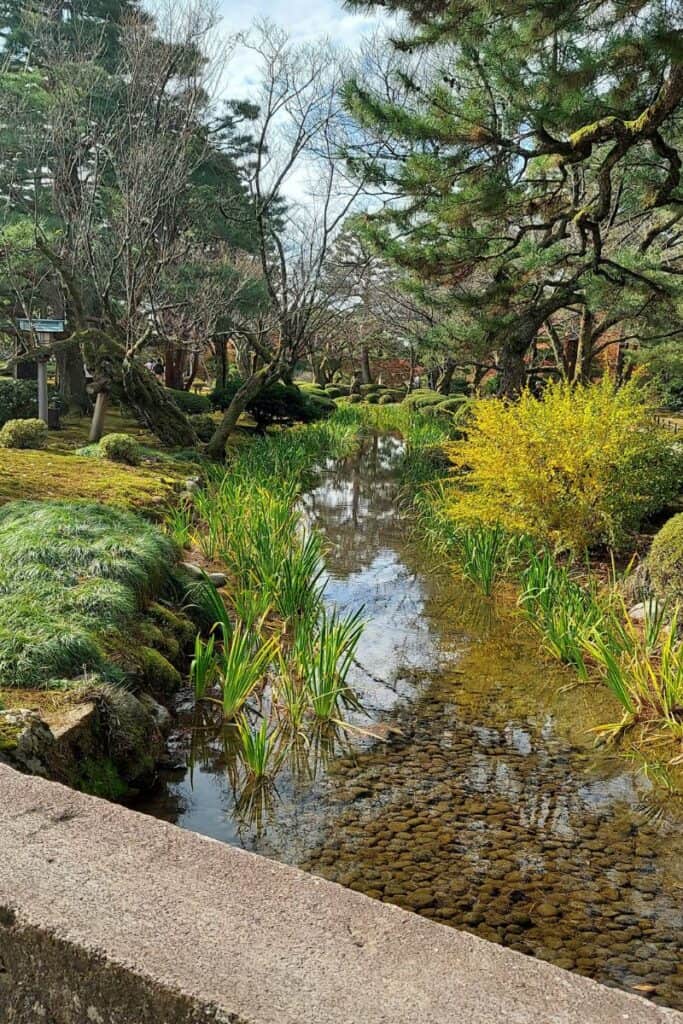
Designed as a strolling-style garden, Kenrokuen invites you to wander through carefully crafted scenes that change with the seasons.
Every path, pond, and tree feels intentional — and yet completely natural at the same time.
I’m not much of a gardener myself, but I’ve always admired Japanese gardens.
The way they blend human creativity with the beauty of nature is something truly special.
If you love peaceful places or just want to experience one of Japan’s finest gardens, Kenrokuen Garden Japan, belongs on your itinerary.
How To Get to Kanazawa, Japan
Getting to Kanazawa
Kanazawa lies on Japan’s west coast, off the typical tourist route. However, it’s still easily accessible from Tokyo, Osaka, or Kyoto.
- From Tokyo or Ueno Station: Take the Shinkansen — about 3 hours.
- From Osaka: Take a local train via Tsuruga — around 2.5 hours.
- From Kyoto: Take a local train via Tsuruga — about 2.5 hours.
- From Tokyo: Take a bus, which takes 8–9 hours but only leave once a day. The route is covered by several operators.
- By Air: The closest airport to Kanazawa is Komatsu Airport. From there you must take a bus and train to Kanazawa. I only recommend this option if you’re coming from distant cities like Sapporo or Fukuoka.
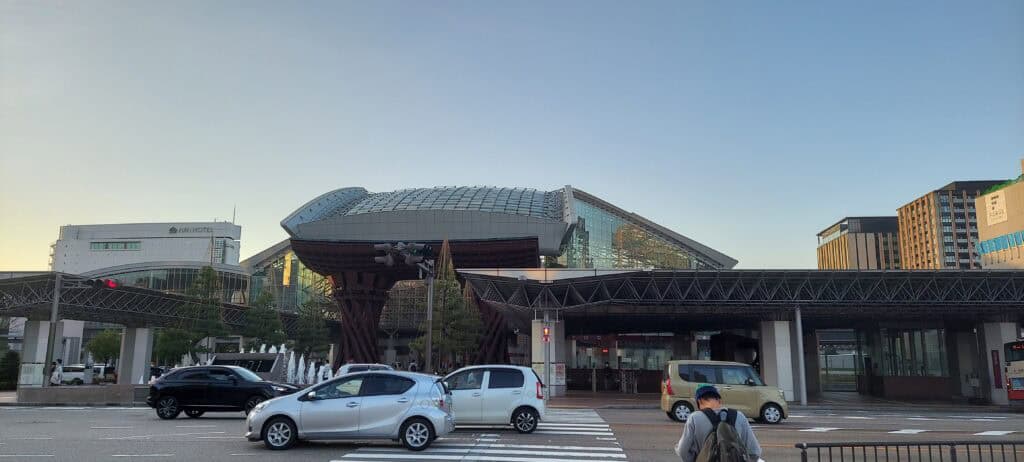
Getting to Kenrokuen Garden from Kanazawa Station
- Kanazawa Loop Bus: Tourist oriented. Departs from the east exit (Kenrokuen Exit). Takes about 20 minutes, 210 yen.
- JR Buses: Covered by the JR Rail Pass. 1–3 buses per hour from the east exit.
- Hokutetsu Local Buses: More frequent than the Kanazawa Loop, takes around 15 minutes to Kenrokuen. Get off at Kenrokuen-shita stop. 210 yen.
- Taxi: Fastest option. 3–5 minute ride, around $11–14 USD.
- Walking: Kenrokuen is an easy 30-minute walk from the station.
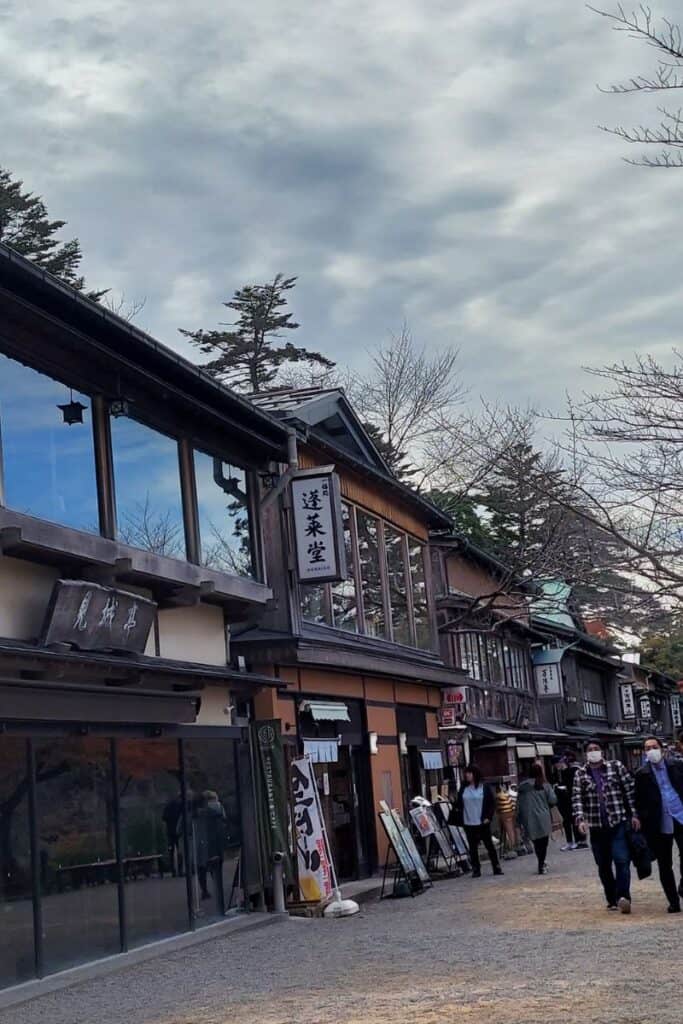
Access Tips for Your Visit to Kenrokuen Garden
Kenrokuen has seven entrances, but if you’re coming from Kanazawa Castle or the bus stop, you’ll probably arrive at the busy Katsurazaka Gate — just like I did.
Instead of joining the long queue, I recommend turning right and following the path past the teahouses and shops.
A short walk brings you to the quieter Renchimon Gate, where you can buy your ticket at a machine and enter with almost no wait.
If you visit during cherry blossom season, this path also gives you the bonus of seeing even more beautiful trees in bloom. Plus, you can grab a snack from one of the nearby cafes before heading into the garden.
Garden opening hours:
- March to October 15: 7:00 AM–6:00 PM
- October 16 to February: 8:00 AM–5:00 PM
Admission: 320 yen (around $2.25 USD)
For the latest information on entrance fees and opening hours visit the official Kenrokuen Garden website.
Tip
During busy seasons like cherry blossom time, entering through Renchimon Gate can save you a lot of time — and give you a quieter, more scenic start to your visit.
Why and When to Visit Kenrokuen Garden
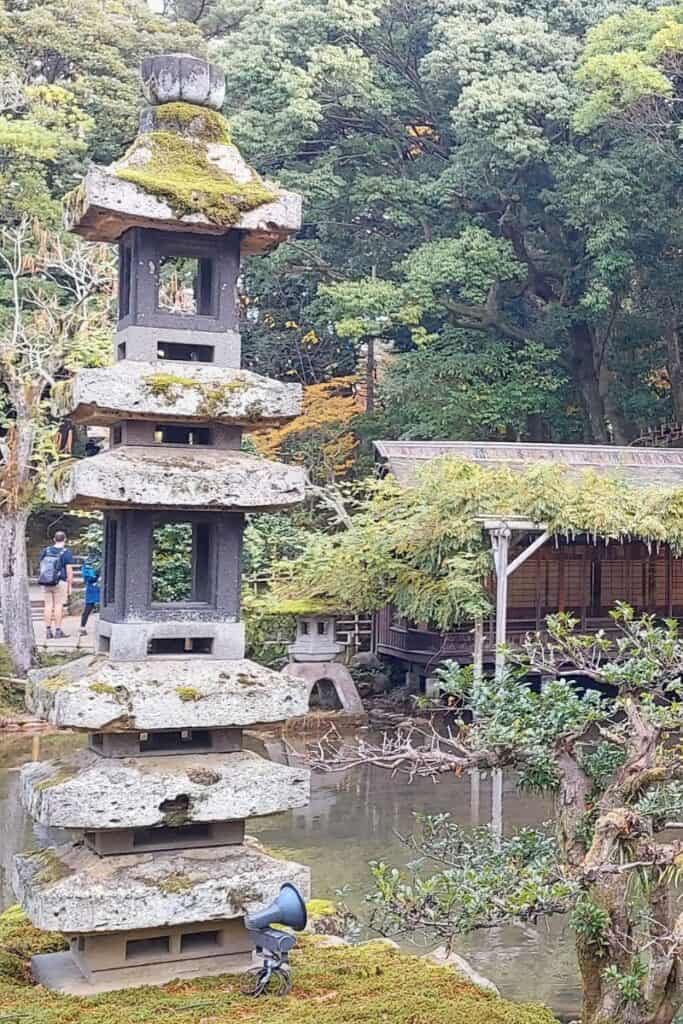
A Garden Beautiful in Every Season
Kenrokuen Garden brings nature and human craftsmanship together in seamless harmony.
One of the things I love about Japanese gardens is how thoughtfully they are curated to highlight the beauty of every season.
I’ve visited gardens in Kyoto, Hiroshima, and Tokyo — each one captivating and unique.
So when I read about Kenrokuen, I knew I had to include it in my recent trip. And I’m happy to say it didn’t disappoint.
Designed for breathtaking winter views, Kenrokuen also shines during cherry blossom and plum blossom seasons, and it dazzles in autumn when the leaves turn brilliant shades of red and gold.
That’s one of the garden’s special qualities: no matter when you visit, Kenrokuen offers stunning scenery year-round.
I visited during aki (autumn), when the weather was cool and perfect for strolling. The trees were spectacular in color, painting the park in vibrant reds and oranges.
Since it was a weekend in peak season, the garden buzzed with people and energy.
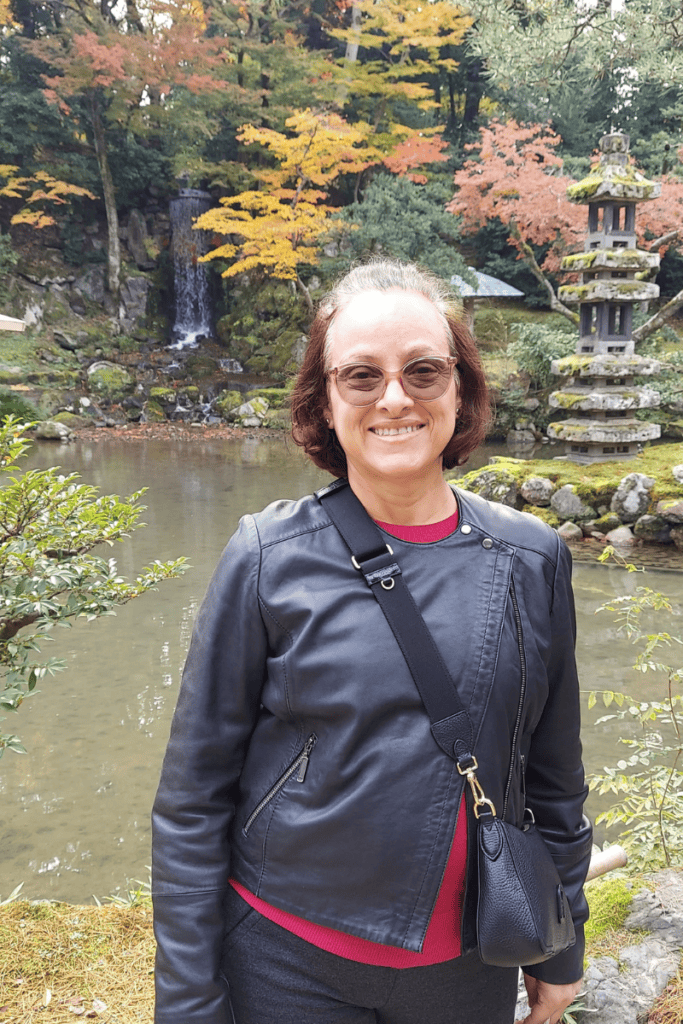
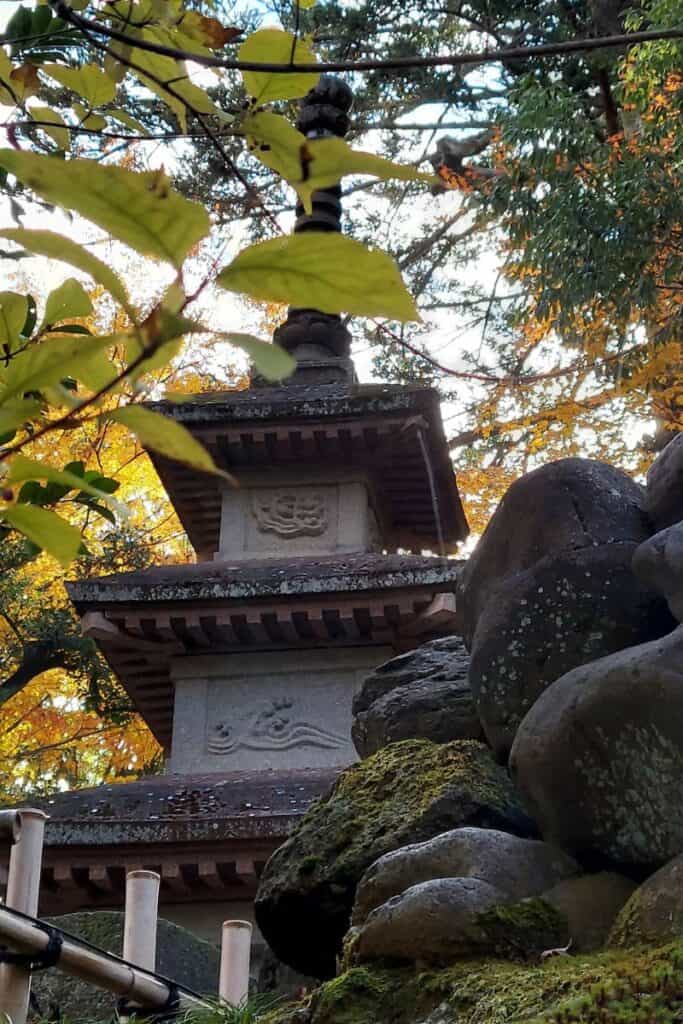
What To See in KENROKUEN
My walk took me past Hisagoike Pond and Midori Waterfall, both peaceful and beautiful.
I crossed a stream adorned with stone lanterns and visited the Shigure Teahouse, then climbed to the stone pagoda, where sweeping views of the garden opened up before me.
Coming down from the pagoda, I reached the still blue waters of Kasumigaike Pond, dotted with exquisite islands and elegant stone bridges.
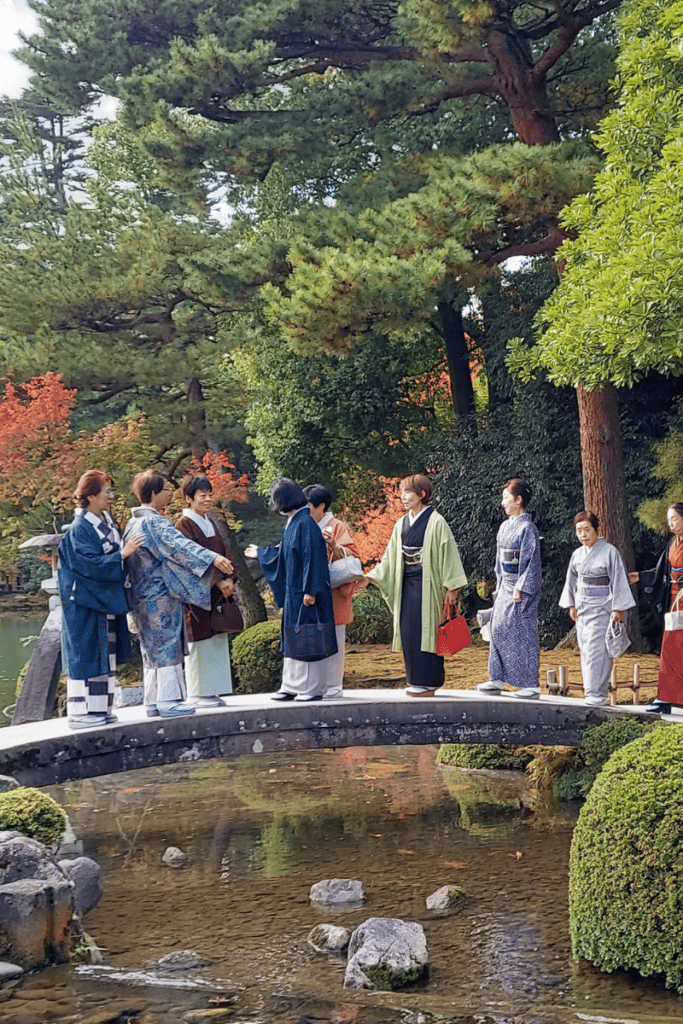
Throughout Kenrokuen, you’ll find charming lanterns, bridges, and seasonal flowers.
Depending on when you visit, you might see cherry blossoms in spring, a lush plum garden, or bursts of autumn color like I did — the red maples were absolutely glowing.
Before you leave, don’t miss the famous Karasaki Pine. Planted from seed centuries ago, this impressive tree now stretches its wide branches out over Kasumigaike Pond, adding to the garden’s timeless beauty.
Other Highlights You Shouldn’t Miss
Kenrokuen is a garden designed for strolling and discovery.
If you have time, I highly recommend visiting one of the tea houses. Sitting down for a quiet cup of tea while surrounded by the beauty of the garden is a memorable experience.
One of the charming tea houses sits right by Kasumigaike Pond, offering a peaceful spot to rest and soak in the views.
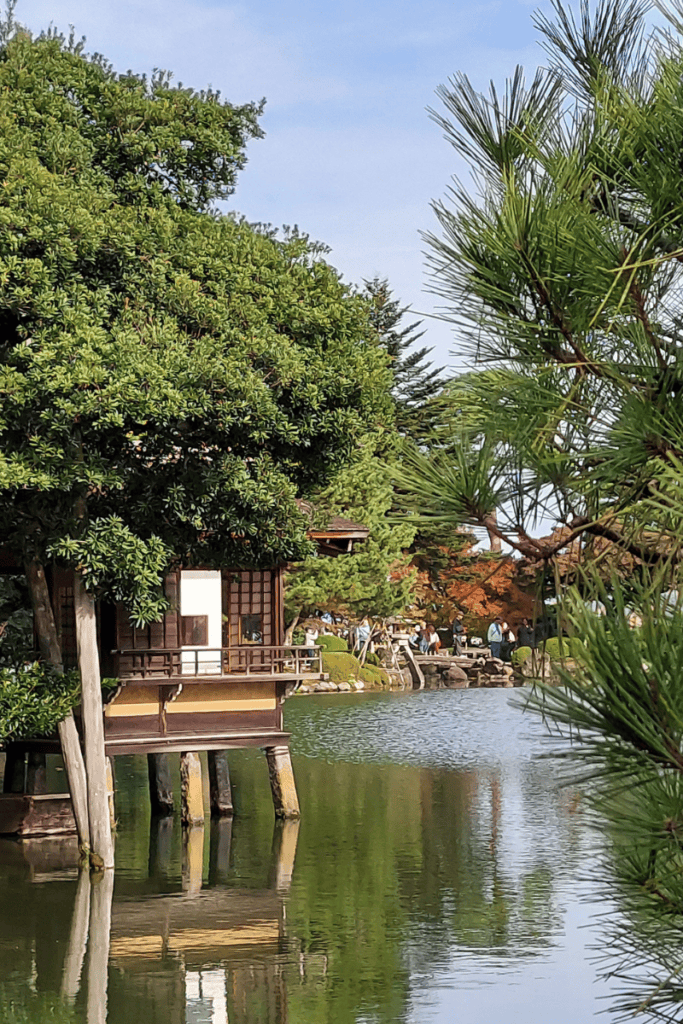
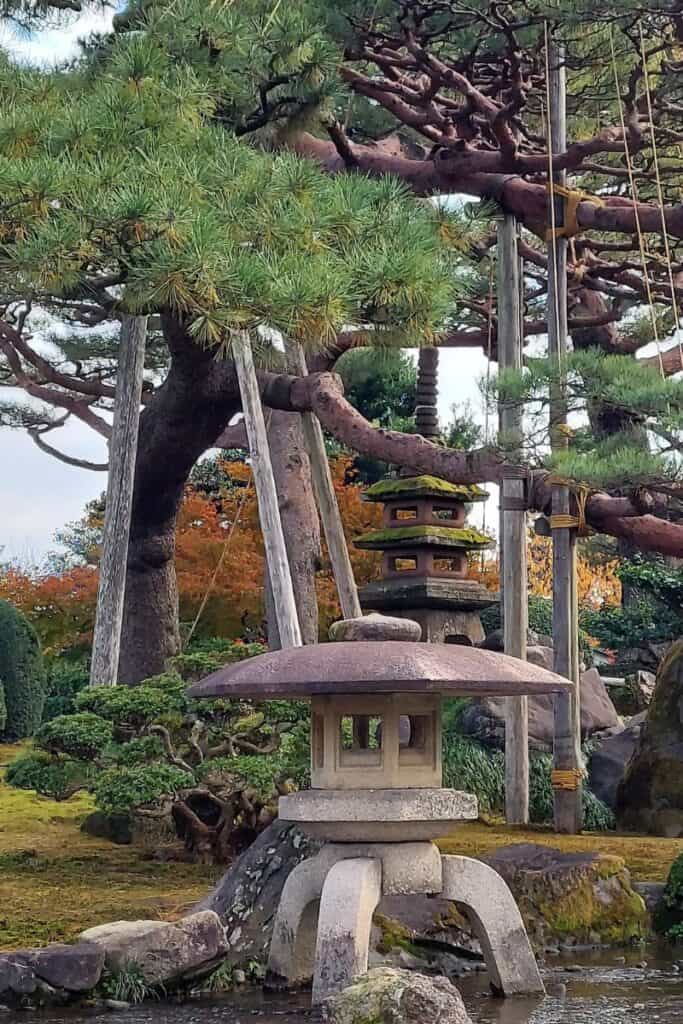
As you walk around, keep an eye out for these highlights:
- Midori Waterfall and Hisagoike Pond
- The iconic Kotojitoro Lantern and the majestic Karasaki Pine by Kasumigaike Pond
- The historic Meiji Monument
- The Fountain near Renchimon Gate — one of Japan’s oldest fountains!
Each corner of Kenrokuen reveals something special, making every step through the garden a delight.
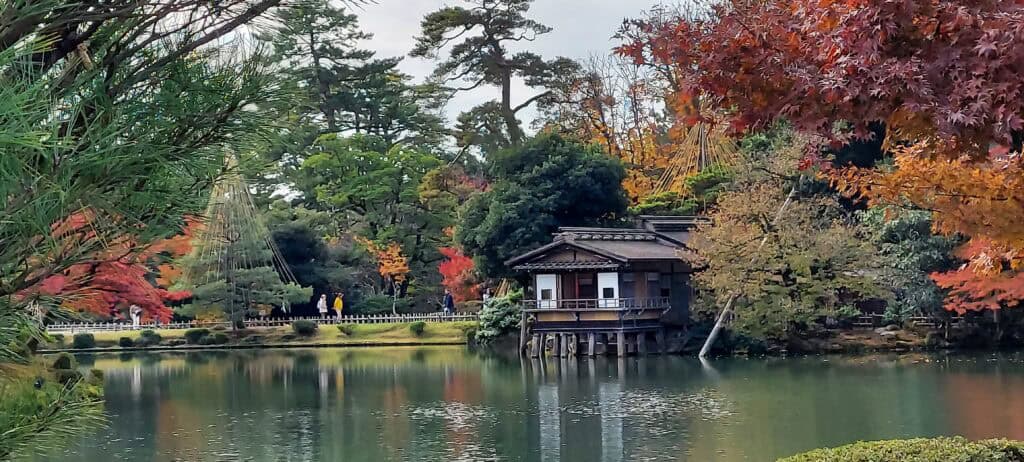
Final Thoughts on Kenrokuen Garden Japan
Kenrokuen Garden lives up to its title as one of the Three Great Gardens of Japan.
With stunning views, seasonal beauty, and so much to explore, it’s absolutely worth adding to your Japan itinerary.
I’m so glad I made time for it — and I’m sure you’ll love discovering it too!
Have any questions about visiting Kenrokuen Garden Japan? Drop them in the comments!
And if you found this guide helpful, feel free to share it or check out our other articles on exploring Japan.
